
 Flash News
Flash News
"I wanted to do it...", the testimony of the Albanian man who killed his ex-wife in Italy is revealed
Two vehicles collide in Korça, one injured
Photo/ Mother of two children, who is the Albanian woman who was stabbed to death, was divorced from the perpetrator 3 years ago
Italy/ 45-year-old Albanian woman stabbed to death by ex-husband
Morning Post/ In 2 lines: What mattered yesterday in Albania
UN chart, Albania's population will "flatten" just like in the 1960s
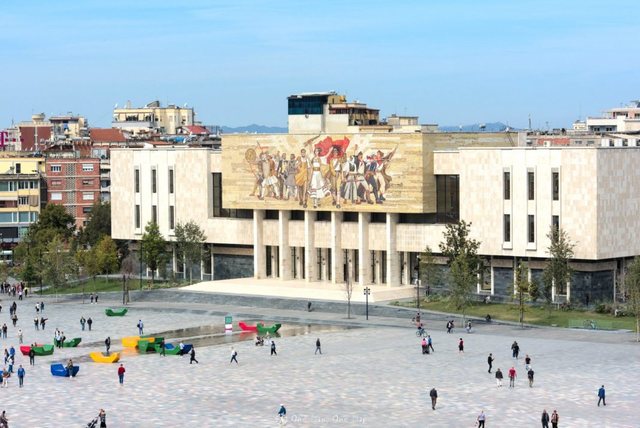
At the beginning of the 1960s, the population of Albania was about 1.2 million inhabitants. In the early 1990s, the country's population almost tripled, reaching 3.3 million.
After the 1990s, the rapid developments that took place in the country also brought great demographic changes. The population began to decline rapidly, influenced first by the high level of immigration that peaked in the first decade of the transition and then by the new lifestyle, with lower birth rates and smaller families.
At the end of 2021, the population of Albania is estimated to be 2.8 million inhabitants, although this is only an estimate, since the last Census was carried out in 2010, while the new one is expected to take place this year.
The United Nations (UN) predicts that the number of inhabitants living in Albania will continue to shrink rapidly in the coming years.
According to UN forecasts, by 2050 the population of Albania is expected to decrease to 2.5 million inhabitants and by 2100 it will shrink to 1.1 million inhabitants, thus reaching the levels of the 1960s (see graph).
Other data processed by Visual Capitalist show that Albania's population is expected to shrink by 15.8% by 2050, according to the report, ranking tenth, after Bulgaria, Lithuania, Latvia, Ukraine, Serbia, Bosnia and Herzegovina, Croatia, Moldova and Japan.
The decline in the birth rate and continuous immigration are the two reasons that are influencing the population reduction. According to the UN, about 40% of Albania's population already lives abroad. Meanwhile, the cycle of immigration has been revitalized in recent years, including families, the educated and especially young people. Even Covid-19 has increased mortality in 2020-2021.
According to INSTAT, the population of Albania on January 1, 2022 is 2,793,592 inhabitants, suffering a decrease of 1.3%, compared to January 1, 2021. This is the fifth consecutive year with a decrease in the number of inhabitants.
During the year 2021, the natural increase of the population (birth-death) was -3,296 inhabitants, marking for the first time a negative natural increase.
During 2021, a significant increase in emigration was also observed, while the number of returnees remains low. INSTAT reported that the number of immigrants in 2021 was 9,195 people and the number of immigrants was 42,048 people. The number of emigrants, according to INSTAT charts, was the highest since 2019 and 2014.
Edhe normat e lindshmërisë (që shpreh numrin e fëmijëve që mund të bëjë një grua gjatë jetës së saj) po bien me ritme të shpejta vit pas viti, duke sinjalizuar rënie pa kthim të popullsisë. Norma e lindshmëria ka zbritur në rreth 1.3 lindje për një grua (poshtë normës së zëvendësimit), duke rënë ndjeshëm nga 6 në vitet 1960 dhe mbi 2 në fillim të viteve 90, sipas INSTAT.
Rënia e lindshmërisë poshtë normës së zëvendësimit të popullsisë sinjalizon rënien e popullsisë gjatë dekadave dhe plakjen e shpejtë. Kontinenti për ketë arsye po vuan plotësimin e nevojave të tregut të punës. Kërkesa për punë e nxitur nga faktori demografik do të krijojë kushtet për një rrjedhë të sigurt emigracioni edhe nga vendet në zhvillim të tilla si Shqipëria.
Also affected by the high rates of immigration, Albania's population has entered a rapid aging process, turning into a major problem for the sustainable economic development of the country./Monitor
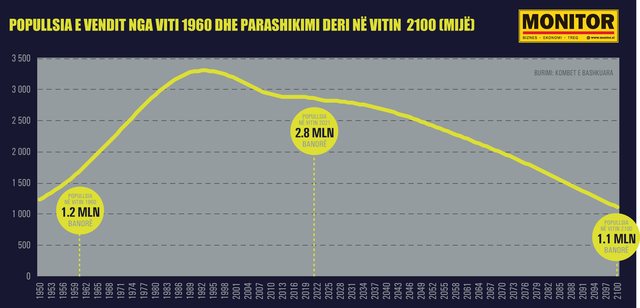
Latest news


Caused a fatal accident and left the scene, 35-year-old arrested in Lezha
2025-06-15 13:40:10


Rare! Whale appears near the Karaburun peninsula
2025-06-15 12:42:49

Stranded at sea, Border Police brings 8 foreign citizens ashore
2025-06-15 12:05:01
Who were the four Iranian generals killed in the Israeli attack?
2025-06-15 11:43:36

Simon Zereci is appointed head of the Republic Guard
2025-06-15 11:10:36
Gennaro Gattuso is expected to be the new Italy coach
2025-06-15 10:45:46
Two vehicles collide in Korça, one injured
2025-06-15 10:20:28
Trump says US can easily broker deal between Iran and Israel
2025-06-15 10:06:11


Italy/ 45-year-old Albanian woman stabbed to death by ex-husband
2025-06-15 09:16:43
Foreign exchange, the rate at which foreign currencies are sold and bought
2025-06-15 09:03:57
Horoscope, what do the stars have in store for you today?
2025-06-15 08:50:41
Albania risks falling below 2 million inhabitants before 2035
2025-06-15 08:30:11
Temperatures reach up to 32 degrees Celsius, weather forecast
2025-06-15 08:18:49
Morning Post/ In 2 lines: What mattered yesterday in Albania
2025-06-15 08:00:49

Two vehicles collide in Karbunara, one injured
2025-06-14 21:36:38
A person is found without signs of life in Peja
2025-06-14 21:18:19

Are you hungry after exercising? Experts recommend these snacks
2025-06-14 20:36:24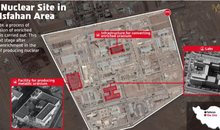

Kudos to Edi Rama for committing the May 11 theft in front of the cameras!
2025-06-14 19:57:21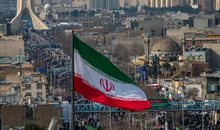


These are the 3 most jealous zodiac signs
2025-06-14 19:01:29

Nesho: Iran is the violator of nuclear production
2025-06-14 18:21:43


A scrap metal collection point in Kavaja is engulfed in flames
2025-06-14 17:19:47
After Israeli attacks, Iran considers blocking the Strait of Hormuz
2025-06-14 17:02:28


Ja çfarë i ndodh organizmit tuaj nëse konsumoni çdo ditë limon
2025-06-14 16:16:23



Internationally wanted for corruption, Loran Dusha extradited from Zimbabwe
2025-06-14 15:30:04
VIDEO/ Dubai skyscraper engulfed in flames, 3,800 residents evacuated
2025-06-14 15:16:49
With these 5 ways, you can cope with the heat even at home
2025-06-14 15:08:46


Fire in Kavaja, a scrap metal collection point engulfed in flames
2025-06-14 14:43:40
Israel eliminates 9 scientists of the Iranian nuclear program
2025-06-14 14:33:34
The appeal of the GJKKO leaves the seizure of Arben Ahmetaj's assets in force
2025-06-14 14:17:14
Less appearance, more connection: How the way men love is changing
2025-06-14 14:16:13
Astrit Sinanaj is arrested in Tirana, he tried twice to kill a businessman
2025-06-14 14:02:59
Accident on Arbri Road, two foreign tourists end up in Trauma
2025-06-14 13:37:03




Tourist found dead inside apartment in Vlora
2025-06-14 12:46:40

Accident in Levan, truck with kitchen utensils ends up in the canal
2025-06-14 12:12:57

Clashes at the Order of the Psychologist, Treska declares the elections invalid
2025-06-14 11:45:55

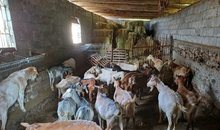



The weekend brings luck for this zodiac sign, a pleasant surprise is coming!
2025-06-14 10:34:31
Caught with firearms and drugs in the car, two people arrested at "Ali Demi"
2025-06-14 10:25:17
Analysis: Israel's attack on Iran, ignition of conflict in the Middle East?
2025-06-14 10:16:14
Gambling in a bar, the owner and the waiter are arrested in Divjaka (NAMES)
2025-06-14 10:07:27
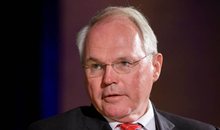



Tourist packages, how much does Albania "cost"
2025-06-14 08:58:23


From sun to clouds, what will the weather be like this Friday in Albania
2025-06-14 08:19:49
Morning mail/ With 2 lines: What mattered yesterday in Albania
2025-06-14 08:08:49
CEC decides to limit spending on local election campaign in Kosovo
2025-06-13 22:54:43
Israel confirms US support for the neutralization of missiles by Iran
2025-06-13 22:37:44

Foods you should avoid after your 40s for health
2025-06-13 22:05:07
Possessive and toxic, get to know the 3 most jealous signs of the horoscope
2025-06-13 21:51:58
Poland: A Russian plane violated our airspace!
2025-06-13 21:40:15



Tragedy in Kurbin/ Fire engulfs pig barn, 450 pigs burned alive
2025-06-13 20:40:44
Xixho: Without functional democracy, EU integration remains an illusion!
2025-06-13 20:27:45
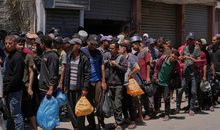
UN: Gaza aid group has failed in its mission
2025-06-13 20:04:32

BIRN: Half of Albanians have a gross salary of less than 62 thousand lek!
2025-06-13 19:31:41
Revenge warned/ Iran raises red flag over mosque, consequence of Israeli attacks
2025-06-13 19:23:10
Albanian man killed in metro station, two Englishmen found guilty
2025-06-13 19:08:41
How recommended is a midday nap for health?
2025-06-13 19:01:58
